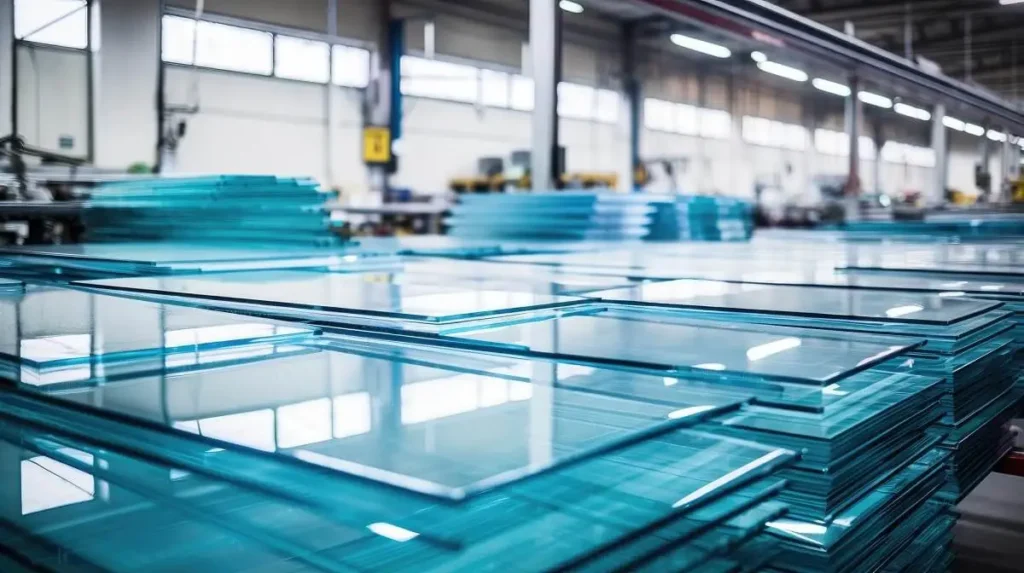Advancements in modern technology are influencing our daily lives. A significant aspect of globalisation is the continuous and integrated use of glass materials in sustainable construction, a trend particularly notable in the architectural glass manufacturing industry. There are numerous advantages of glass that need not be mentioned. With its property and value increasing in this anomaly of modern architecture, glasses have become a popular material that is constantly evolving over time. A key prospect that we will be delving into is the application of these glasses in future architectural projects and how they are shaping the world we live in today.
Some Benefits of Glass in Architecture
The marvels of glass in architecture have several astonishing points. The most widely known and appreciated property of glass is its transparency. When natural light is the source of power, beauty, harmony, and well-being that accentuates everyone’s lives, glasses contribute more to this role as a forebringer of enhancement and connection.
Due to glass’s see-through nature, sunlight can permeate a building’s interiors and eliminate the need for artificial lighting, which could increase utility bills in the long run. Glasses not only capture natural light but also enhance a building’s aesthetics. They can also be crafted and moulded in various ways, including tinted, frosted, textured, or embellished.
Integration of Glasses in Green Buildings
With overpopulation skyrocketing, an enormous amount of natural resources are being depleted to meet the demands of the people. This has severe negative effects on the economy. Establishing power plants, commercial and residential buildings, and industries to sustain the ever-growing population harms the environment by releasing extreme levels of pollution-causing substances. Hence, the need of the hour is to search for sustainable options to limit sabotaging the environment.
Even though controlling the population is possible, it might take years of planning and action to reach that stage. However, there is something we can do to limit the overuse of resources and contribute to healthy living. That starts with the construction of green buildings, which often heavily incorporate glass elements, including decorative glasses, to enhance their sustainability and aesthetics.
What are Green Buildings?
A building designed and developed to provide a long-lasting, energy-efficient, and modern structure is referred to as a green or sustainable building. These buildings are designed to effectively serve their intended functions while having the least negative environmental impact possible. They save water, energy, and resources while producing less waste. This lowers operating costs and improves the quality of life for occupants right from the start and throughout its life.

Role of Glass in Green Buildings
Glass has many benefits that increase the sustainability and efficiency of green buildings, making it an essential element in their design and construction.
- Ecosense Glass
By blocking solar radiation, limiting heat buildup, and lowering the need for artificial cooling systems, Ecosense Glass addresses the issues posed by tropical climates. Additionally, it lets in natural light, which brightens interior spaces. This makes it the perfect option for skylights, windows, and facades, maximising both visual appeal and usefulness. Architects and architectural glass manufacturers alike are drawn to this solution.
- Opal Glass
Opal glass, also known as solar control glass, enhances a building’s visual appeal and energy efficiency by blocking solar heat, reducing air conditioning usage and energy consumption. It prevents heat gain through windows and facades, ensuring comfortable indoor temperatures and reducing mechanical cooling systems. This not only enhances occupant comfort but also saves energy bills. Opal glass also enhances the building’s aesthetic appeal and architectural design.
- Sunshield Glass:
Sunshield glass offers exceptional cooling performance and is made to resist the harsh temperatures of India. It provides protection against damaging UV radiation, durability, and heat insulation. Its cutting-edge covering lessens glare while safeguarding the health of those within. Sunshield glass helps architects design sustainable living environments that are more aesthetically pleasing and comfortable while also increasing energy efficiency.
- Supersilver Glass:
With its advanced heat-reflective properties, supersilver glass helps to improve thermal insulation and energy efficiency by reducing heat flow into buildings. Green building applications can benefit greatly from its customisable features, which include UV radiation protection and acoustic insulation. Architects that aim to maximise both performance and aesthetics tend to favour it because of its versatility and ease of installation.
Future of Glass Architecture
Glass will undoubtedly continue to play an important role in the future. Many prosperous nations have used distinctive new developments in glass technology that were previously thought to be unachievable. Here are some of the future glass integrations we may expect in big high-rise structures and commercial sectors.
- Smart glass:
Smart glass, also known as switchable glass, refers to glass that can be electronically controlled to switch between transparency and opacity. This technology is anticipated to become increasingly common, enabling precise control over light and privacy within buildings.
- Transparent Structures:
Glasses will continue to be a key material for creating transparent structures like bridges and balconies, offering breathtaking views and a feeling of spaciousness.
- Energy-Efficient Glass:
Ongoing advancements in coatings and technologies will enhance the energy efficiency of glass, making it an even greener option for buildings.
- Customised Glass:
Improvements in glass manufacturing will enable the production of customised glass tailored for specific purposes. This could include glass with unique features like self-cleaning or anti-fogging properties or glass designed to meet the specific needs of individual buildings.
Conclusion
Glass is becoming an eco-friendly and adaptable material of choice for architects and glass manufacturers as the need for greener construction materials rises. With a commitment to quality, sustainability, and innovation, The Glass Guru offers cutting-edge solutions and expertise to stay ahead of the curve and maximise the potential of glass in projects. If you’re looking for a way to get your project started, reach out to us, and we’ll be happy to assist you right away.
